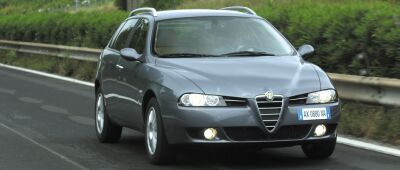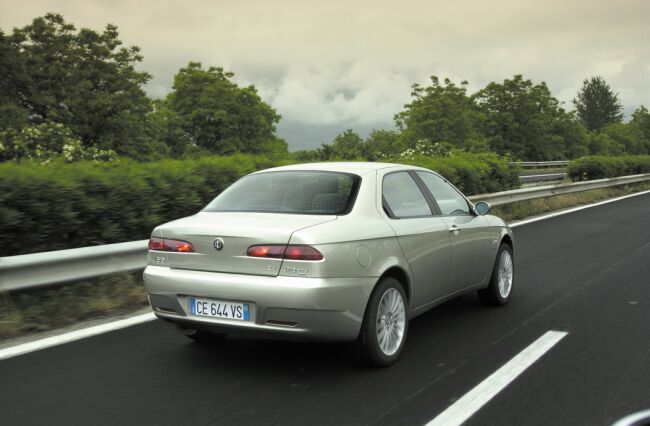| INTRODUCTION
The New Alfa 156 and Sportwagon
cars, due to go on sale from 21 June, will replace a model that has been
reaping sales success and prestigious awards for five years. During this
time the car has been the first choice of more than 540,000 customers throughout
more than 80 countries. This makes it the current widest selling Fiat Auto
model in the world. The car now occupies an enviable position in European
segment D, where it has easily tripled the Alfa Romeo share: from 0.7%
in 1996 to 2.5% by the end of April 2003 with a peak of 3.6% in 2000. It
also boosted overall brand sales, which rose - in Europe - from 117,500
in 1996 (0.9%) to 202,100 in 2001 (1.4%). 2002 also closed with sales of
170,000 cars (1.2%).
It is also interesting to
note the sales mix of engines and specifications recorded during 2002.
In Europe Alfa 156 and Sportwagon equipped with JTD engines accounted for
76% of sales while sports versions (2.0 JTS manual and Selespeed gearbox,
2.5 V6 and GTA) represent more than 11% of the total. Customers were equally
divided between those who chose the saloon (51%) and those who prefer the
Sportwagon version (49%). As far as the sales mix per specification was
concerned, 60% opted for the Progression level and 40% the Distinctive.
All in all, the Alfa 156
has lived up to its promise and managed to achieve major goals. The credit
is definitely due to the model's solid grounding: the best of Italian design
combined with state-of-the-art engineering and a wide range made up of
a host of versions with different power units and gearboxes. These have
been complemented by a steady flow of new features to keep the public's
attention.
Cast your mind back to 9
October 1997, the day on which the Alfa 156 was introduced to the international
press in Lisbon. This was the turning point of Alfa's sales fortunes and
image. At that moment, Alfa Romeo reclaimed its own long tradition and
its rightful place within the pantheon of prestige sports car manufacturers.
The new car won appreciation from the press, who voted it 'Car of the Year
1998' (this award was followed by 35 more accolades). The other motor manufacturers
also had to sit up and take notice. It did not take them long to follow
suite and extend their ranges to include the Common Rail turbodiesel engines
first seen on the Alfa saloon.
Alfa Romeo continued to improve
its model. This was borne out by the Alfa Sportwagon in 2000, a car whose
shape and content immediately singled it out as much more than an ordinary
station wagon version of the Alfa 156. Then came the 156 Selespeed, equipped
with a 2.0 T.Spark 16v and a robotised gearbox with steering wheel controls.
These were then joined by another Alfa 156 with 2.5 V6 24v engine that
offered customers Alfa Romeo's version of automatic transmission, i.e.
a device created to ensure maximum comfort under all conditions but able
to guarantee all the driving satisfaction of a manual device when required.
2002 saw the introduction
of the mildly revised Alfa 156 and Sportwagon, together with the Alfa 156
GTA, another stage of the progress that saw an increase in the comfort
and safety content, more creature comforts and the introduction of a brand-new
petrol engine with direct injection (2.0 JTS). Not to mention the fact
that a few months later we saw the world debut of the brand new 103 kW
(140 bhp) 1.9 JTD Multijet 16v, forerunner of the second Common Rail turbodiesel
generation.
Now it is the turn of the
New Alfa 156 and Sportwagon to confirm the model's vitality. These two
cars, reinterpreted by the famous designer Giorgetto Giugiaro, maintain
the car's underlying attribute of a vivacious personality coupled with
outstanding dynamism. This vitality is the secret that has turned positive,
immediate acclaim into lasting success. |



